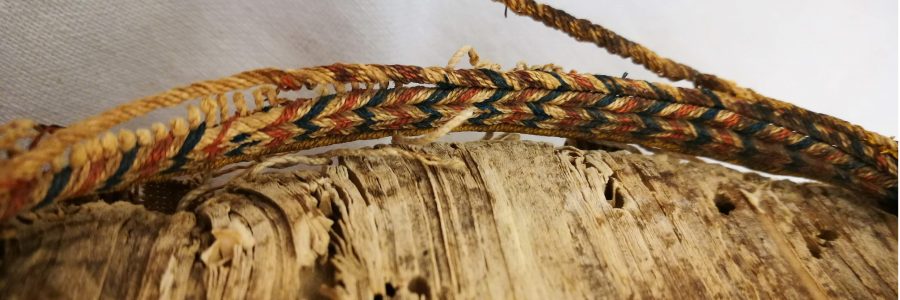
The Polonsky Foundation Greek Manuscripts Project: Medieval Eastern Mediterranean Binding Model – Part 2.
Welcome to another Polonsky Foundation Greek Manuscripts Conservation blogpost. In this blogpost we will be sharing our next steps of the creation of the Medieval Eastern Mediterranean binding models – covering! The books were covered while the team were working from home and so involved the extra challenge of being away from the lovely conservation studio with lots of specialist equipment at hand. Luckily, Shaun Thompson (Project Conservation Lead) was able to take the team through the process of covering from home over a video call.
The very first stage is to cut the skin to size, leaving enough to turn in at the edges. In this instance the team used a tanned goat skin. The areas of the skin that would form the endcaps were then pared to a fine edge. The skin is folded around the book and marked as a guide to determine the shape of the leather around the endbands – precision is required to neatly cover around this complex shape. The skin is then cut, and further paring is made around the new edges.

Next, the skin is pasted up and the endcaps are turned-in so that they sit flush with the endbands. The binding is then laid onto the skin making sure it is aligned correctly. The skin can then be rubbed down onto the spine and boards, adhering it to the binding, taking extra care not to bruise the skin.

The next step is to turn in the skin over the edges of the wooden boards. First, the corners are cut and pared so they create a slight overlap that will form neatly over the grooved edges. Tackling one board at a time the head and tail of the skin is turned in before the fore-edge. Extra care is taken to form the skin around the endbands and work it into the grooves. After turning-in the corners will overlap and so can be cut so they lay flush. A sharp knife is taken, held at 45 degrees and a cut made from the corner inwards toward the centre of the board. The excess leather is removed, and a neat mitre cut corner remains.

The binding is then wrapped in a bandage and put under light weight to dry. Preparation and covering can take up to two hours. Below you can see a time-lapse video of Marina completing the whole process of covering from home!
And here are our covered models. The next step is leather braiding for the straps and furniture fabrication.

Thank you for taking your time to read our blogpost. Be sure to look out for updates on the project in our future posts. See you soon!
Sam Foley, Marie Renaudin, Marina Kruger Pelissari
Polonsky Foundation Greek Manuscripts Project Conservators
